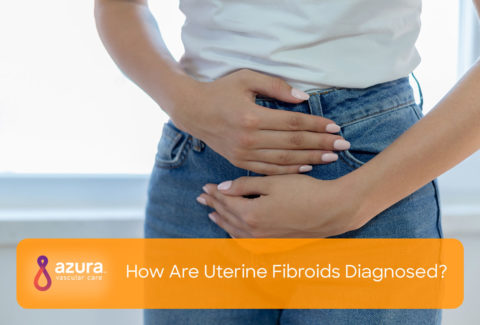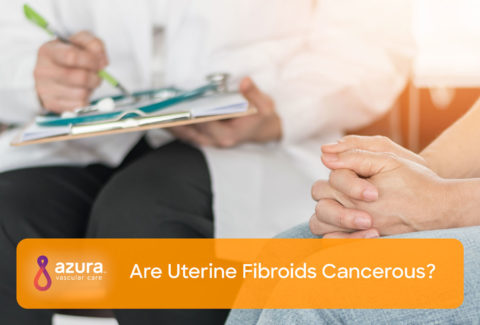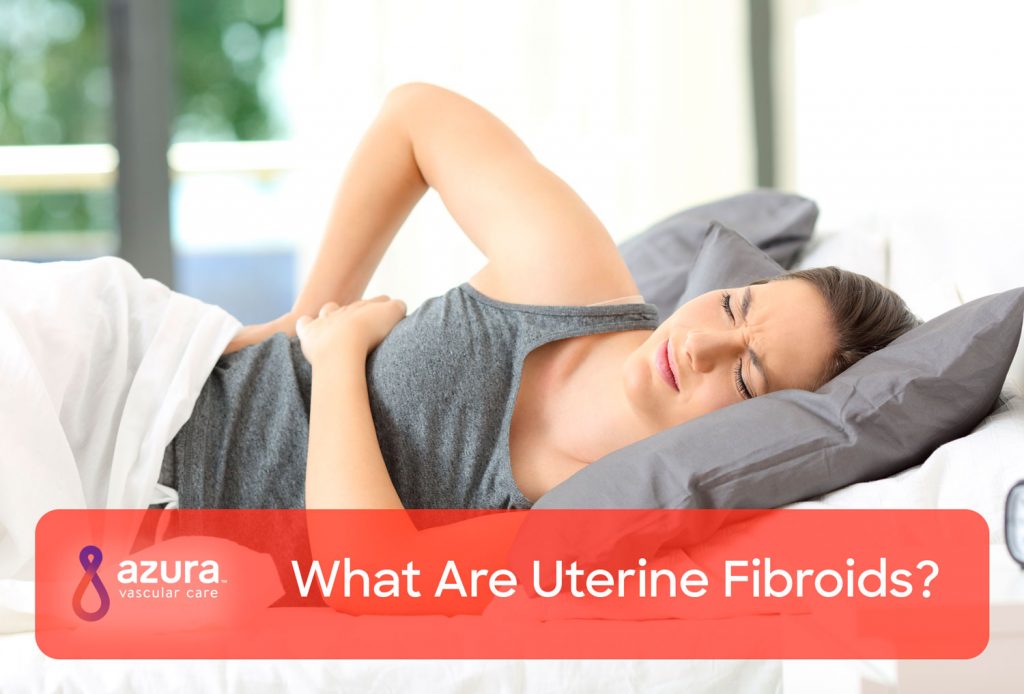
Perhaps you’re concerned that you may have a uterine fibroid, have been told that you have uterine fibroids, or you know someone who has been diagnosed with this condition. You may be asking “what are uterine fibroids and how are they treated?” Whether you’re curious about the symptoms, treatment options, or what types of doctors treat patients with fibroids, below you will find basic information about these non-cancerous fibroid tumors in the uterus.
What Are Uterine Fibroids?
Uterine fibroids are non-cancerous growths of the muscle tissue of the uterus. They may also be called myomas or leiomyomas.[i] They can occur as either a single fibroid or as many fibroids, and can range in size from tiny, to larger than a softball.[ii] They are quite common in African American females and are estimated to occur in 40-60% of all women by the time they turn 35.[iii] The causes of fibroids are unknown, although they are associated with starting menstruation before the age of 11 and occur less often in women with more pregnancies.[iv] [v]
Symptoms of Uterine Fibroids
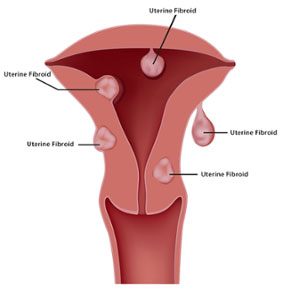 Fibroids can cause no problems at all and be found incidentally, or essentially by accident. Unfortunately for some, they can cause a variety of problems. The signs and symptoms of fibroids are related to the location, size, and number of fibroids. Some clues that fibroids may be causing problems include:
Fibroids can cause no problems at all and be found incidentally, or essentially by accident. Unfortunately for some, they can cause a variety of problems. The signs and symptoms of fibroids are related to the location, size, and number of fibroids. Some clues that fibroids may be causing problems include:
- Heavy menstrual bleeding that can lead to anemia, or significant blood loss.
- Painful menstrual cramps.
- Pain in the back or lower abdomen.
- Pain with intercourse.
- Problems with constipation.
- Difficulty or frequent urination.
- Problems with getting pregnant or having miscarriages.
- Feeling a lump in the lower abdomen.
Diagnosis of Uterine Fibroids
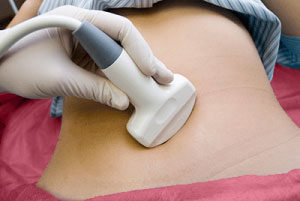 While fibroids can be detected during a physical exam of the pelvic area, more advanced testing is needed of any pelvic abnormality to fully evaluate the area of concern. Testing is often performed if symptoms are present, even if the physical exam appears normal. There are two tests that are commonly performed to evaluate for fibroids.
While fibroids can be detected during a physical exam of the pelvic area, more advanced testing is needed of any pelvic abnormality to fully evaluate the area of concern. Testing is often performed if symptoms are present, even if the physical exam appears normal. There are two tests that are commonly performed to evaluate for fibroids.
- Pelvic Ultrasound — Pelvic ultrasound, or ultrasound of the uterus and ovaries, is usually the first step in determining if a fibroid or any abnormality is present.
- Magnetic Resonance Imaging — Magnetic resonance imaging, or MRI, is an advanced radiology test that can get a better look at any pelvic abnormality and is useful in determining the precise location and size of any fibroids.
3 Treatment Options for Uterine Fibroids
As women can have a wide variety of symptoms related to fibroids, treatment options are varied as well. Some women need no treatment at all, but for women who feel the impact of fibroids, help is available to alleviate the symptoms or to eliminate the fibroids altogether.
1. Drug Therapy
Medications are available to lessen the symptoms of fibroids.
- Birth control pills can control the menstrual cycles.
- Injections of hormones can control the menstrual cycles.
- Medications can stop heavy bleeding.
- Hormone containing intrauterine devices (IUDs) are t-shaped devices can prevent pregnancy and can lessen menstrual bleeding.[vi]
2. Surgery
There are two common surgeries for uterine fibroids.
- Myomectomy is a surgical procedure that involves the removal of one fibroid at a time.
- Hysterectomy involves removal of the entire uterus, with or without removal of the ovaries, and cures the condition. This surgery involves 6 weeks of recovery.[vii]
3. Minimally Invasive Procedures
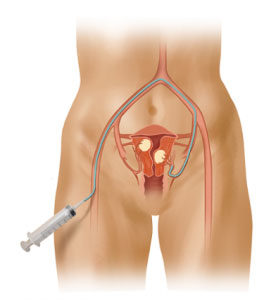 These procedures do not involve major surgery and are effective in the treatment of fibroids. The recovery period is typically 1-2 weeks.
These procedures do not involve major surgery and are effective in the treatment of fibroids. The recovery period is typically 1-2 weeks.
- Uterine fibroid embolization (UFE), or uterine artery embolization, involves blocking the blood flow to the fibroid with beads and is performed by an interventional radiologist.
- Endometrial ablation involves destruction of the lining of the uterus.[viii]
If you have more questions or concerns, you should start with finding a physician who is trained in the diagnosis and treatment of fibroids. Most women should start with a gynecologist. If you are interested in pursuing minimally invasive options, you should consider seeking out an interventional radiologist specializing in the treatment of uterine fibroids.
Sources:
[i] http://www.acog.org/Patients/FAQs/Uterine-Fibroids
[ii] https://www.nichd.nih.gov/health/topics/uterine/conditioninfo/Pages/default.aspx#f1
[iii] Baird, D.D., et al., High cumulative incidence of uterine leiomyoma in black and white women: ultrasound evidence. Am J Obstet Gynecol, 2003. 188(1): p. 100-7.
[iv] Velez Edwards, D.R., Baird, D.D., and Hartmann, K.E., Association of age at menarche with increasing number of fibroids in a cohort of women who underwent standardized ultrasound assessment. Am J Epidemiol, 2013. 178(3): p. 426-433.
[v] Khan, A.T., M. Shehmar, and J.K. Gupta, Uterine fibroids: current perspectives. Int J Womens Health, 2014. 6: p. 95-114.
[vi] Moroni, R.M., et al., Pharmacological treatment of uterine fibroids. Ann Med Health Sci Res, 2014. 4(3): p. 185-192.
[vii] http://www.sirweb.org/patients/uterine-fibroids/
[viii] Khan, A.T., M. Shehmar, and J.K. Gupta, Uterine fibroids: current perspectives. Int J Womens Health, 2014. 6: p. 95-114.
